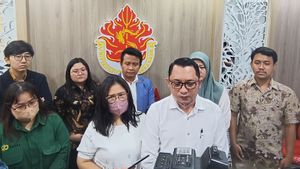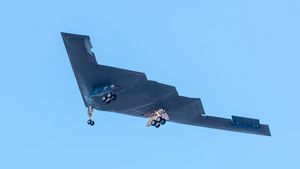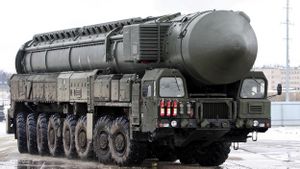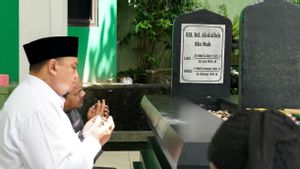JAKARTA - The DKI Jakarta Environment Agency revealed that the air quality of the City of Jakarta is in the unhealthy category because the number of fine particles (Particulate Matter/PM) 2.5 based on the Air Pollution Standard Index (ISPU) reached 101 on Friday to 07.45 WIB. As reported by ANTARA, Friday, September 15 from the official website of the Environmental Information System and Hygiene of the DKI Jakarta Provincial Agency (DLH) stated that, among the five regions, Lubang Buaya (East Jakarta) had a PM2.5 figure of 101.5 or was among benchmarks 101-199. This figure has an explanation that the air quality level is unhealthy because it can harm humans or groups of animals that are sensitive or can cause damage to plants or aesthetic value. While the category is good, namely the level of air quality that does not have an effect on human or animal health and has no effect on plants, buildings or aesthetic values with a PM2.5 range of 0-50. Then, the moderate category is its air quality which does not affect human or animal health but affects sensitive plants and aesthetic values with a PM2.5 range of 51-100.
Then, the very unhealthy category with a PM2.5 range of 200-299 or its air quality can harm health in a number of exposed segments of the population. Finally, it is dangerous (300-500) or in general its air quality can harm the health of the population. In addition to East Jakarta, the ISPU in other areas of Jakarta City was monitored moderately, namely the HI Roundabout in Central Jakarta (77), Kelapa Gading in North Jakarta (82), Jagakarsa in South Jakarta (73) and Kebon Jeruk in West Jakarta (70). Meanwhile, Jakarta on the IQ Air monitoring site on Friday at 07.00 WIB, is classified as the number three city with the highest air pollution in the world. Number City is polluted first and second, namely Dubai, United Arab Emirates (182) then Lahore, Pakistan (160).
VOIR éGALEMENT:
IKU in Jakarta is high because the current PM2.5 concentration is 14.1 times higher than the air quality guide value of the World Health Organization (WHO), namely 159 AQI US. Air quality data obtained based on monitoring at 20 monitoring stations, including on the Permai Screen (PIK), Jalan Raya Perjuangan (Kebon Jeruk) and Jimbaran (Ancol).
The English, Chinese, Japanese, Arabic, and French versions are automatically generated by the AI. So there may still be inaccuracies in translating, please always see Indonesian as our main language. (system supported by DigitalSiber.id)


















